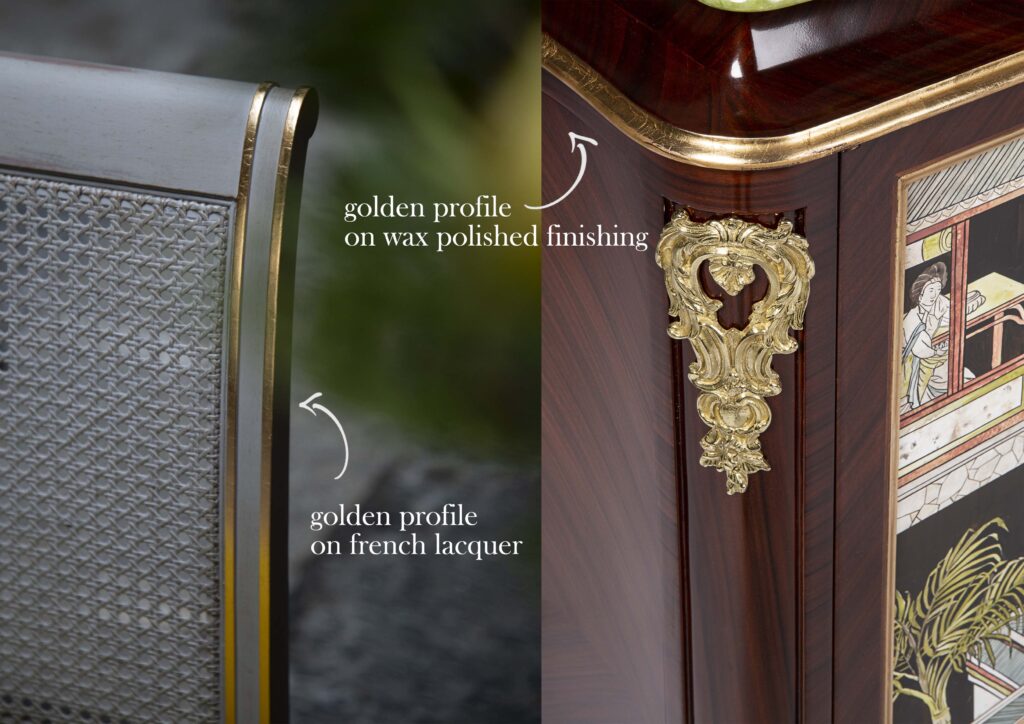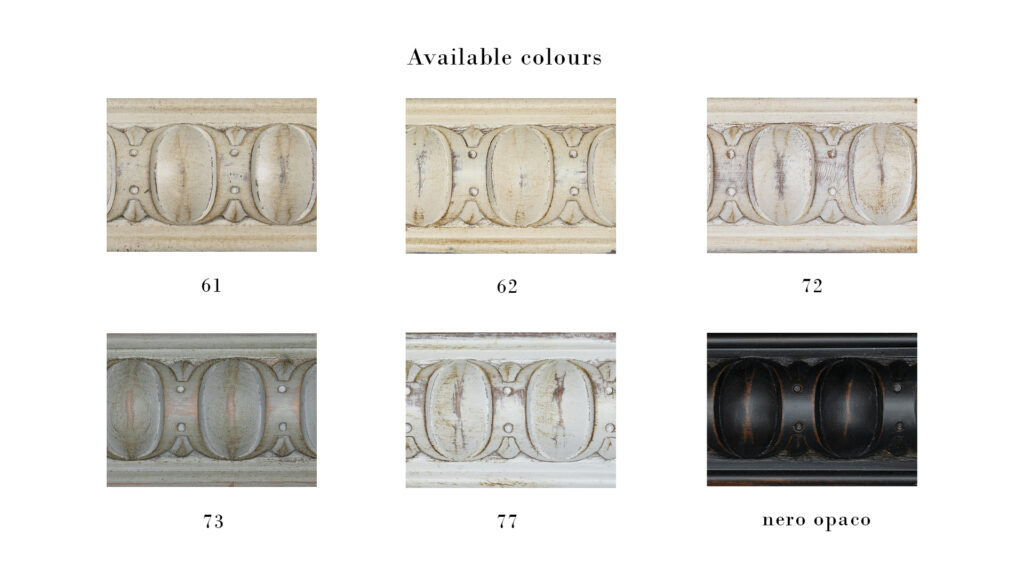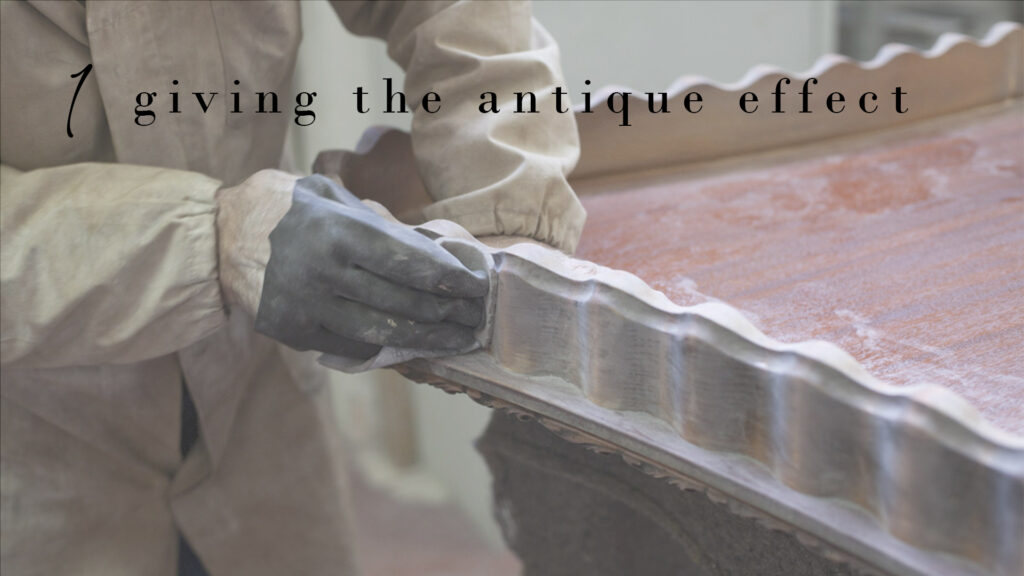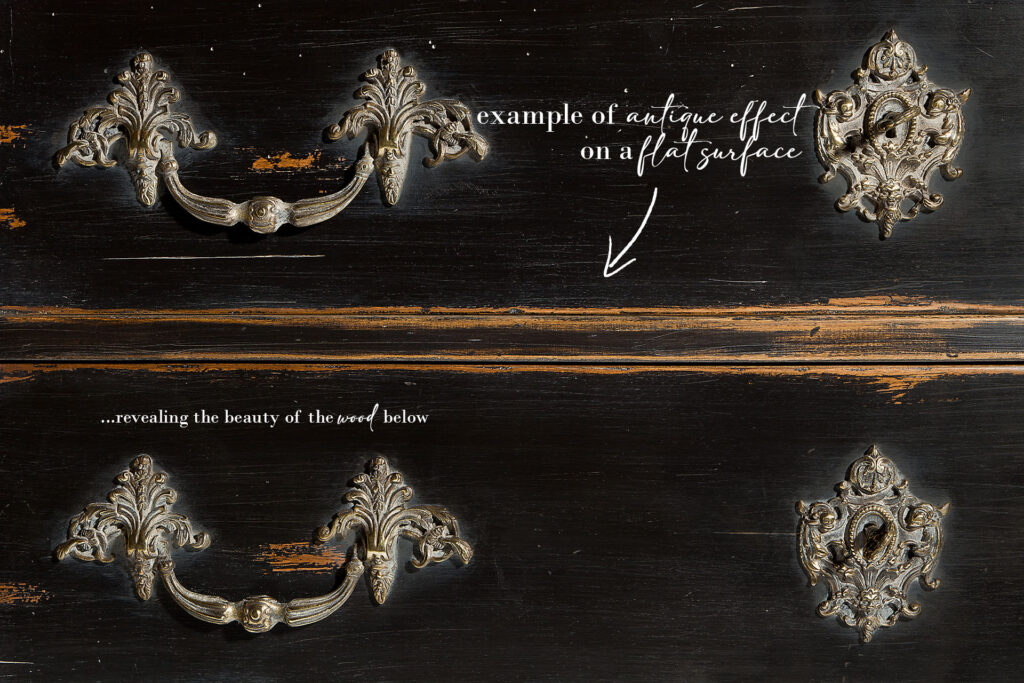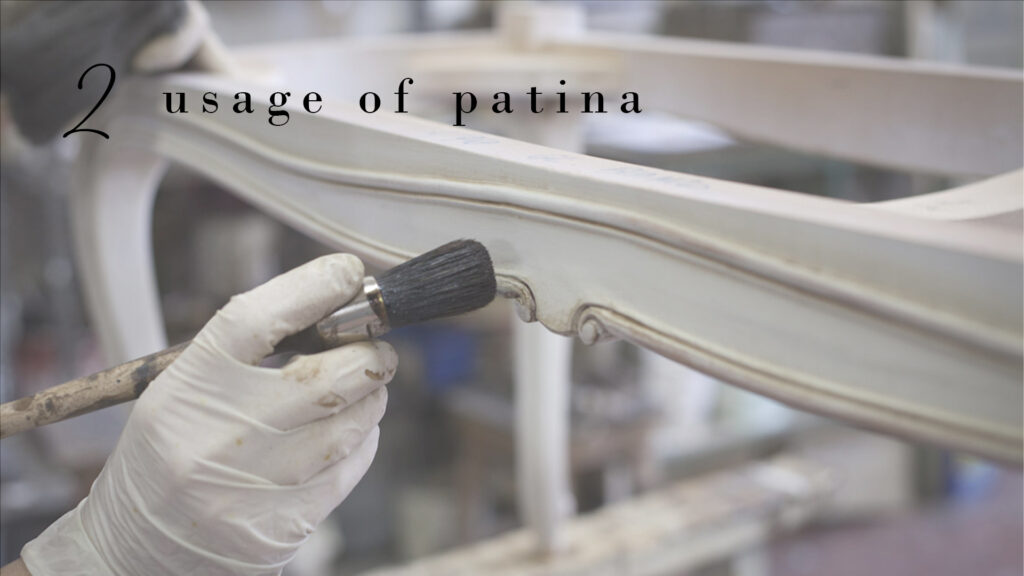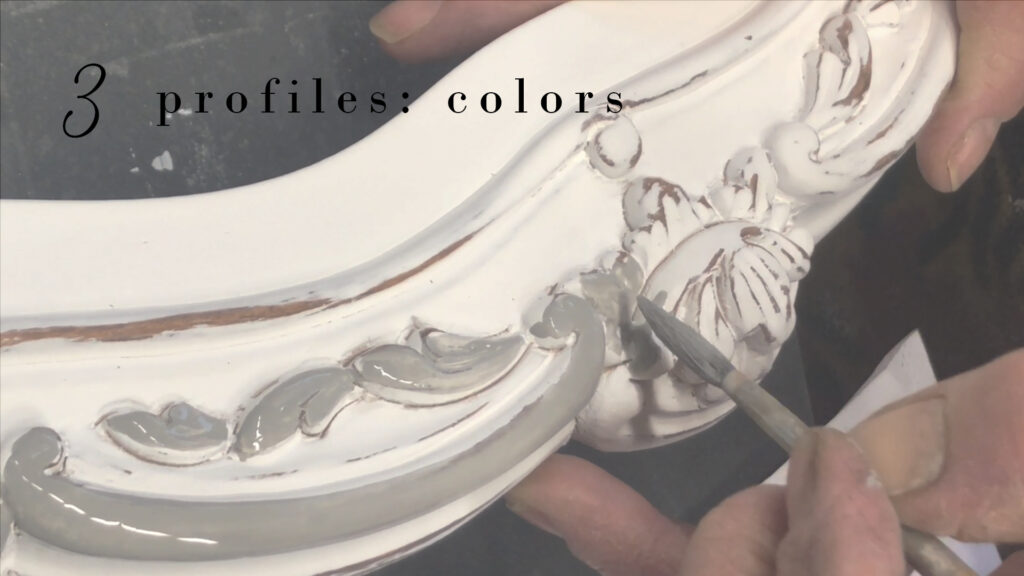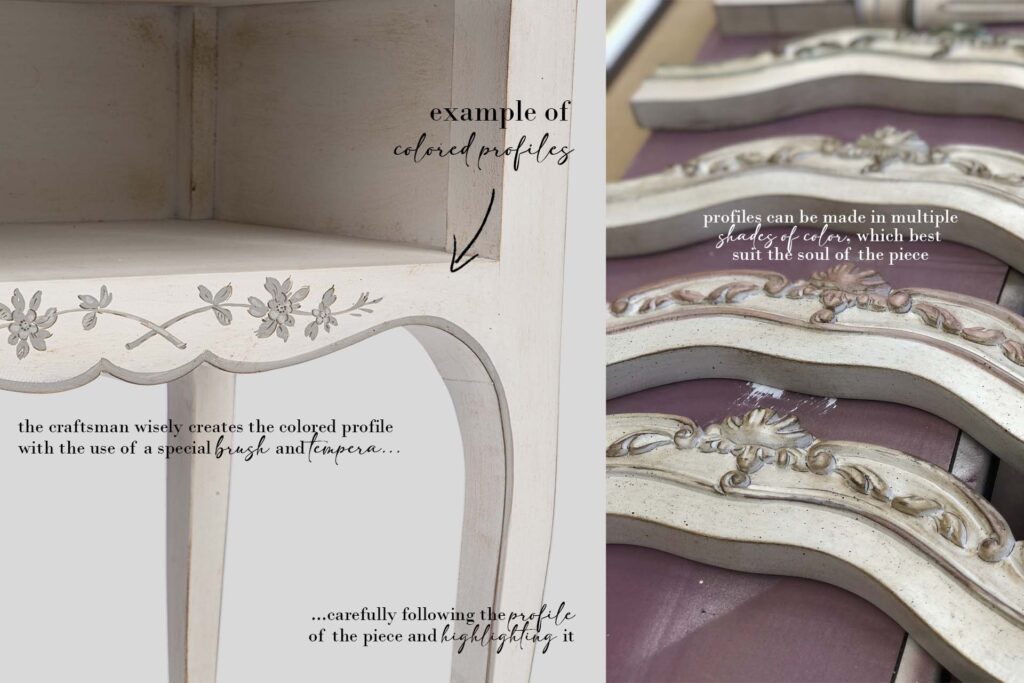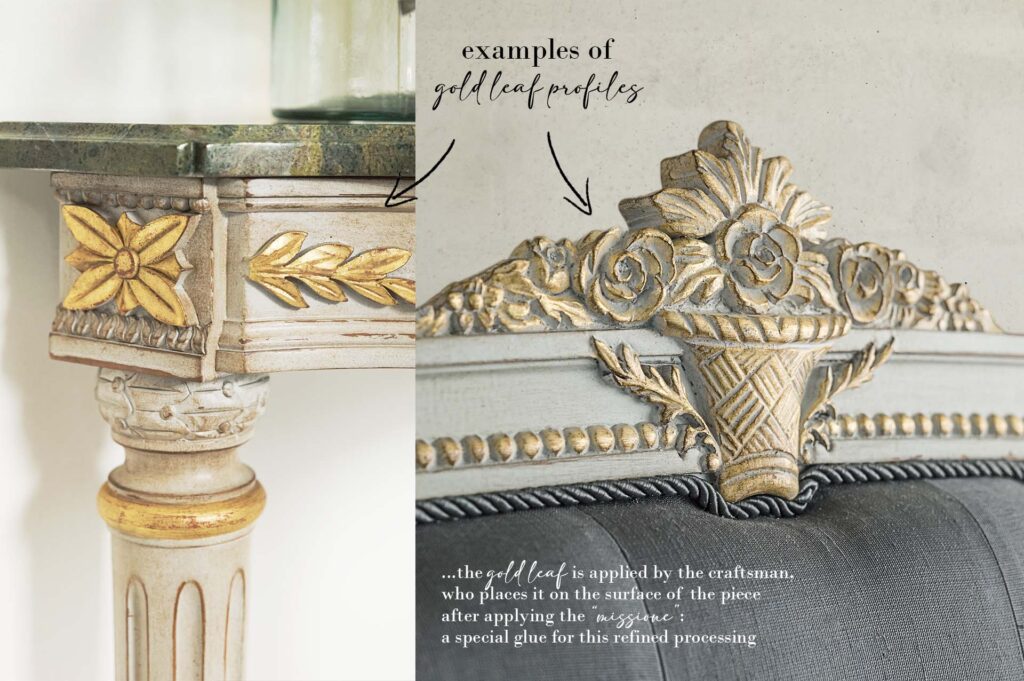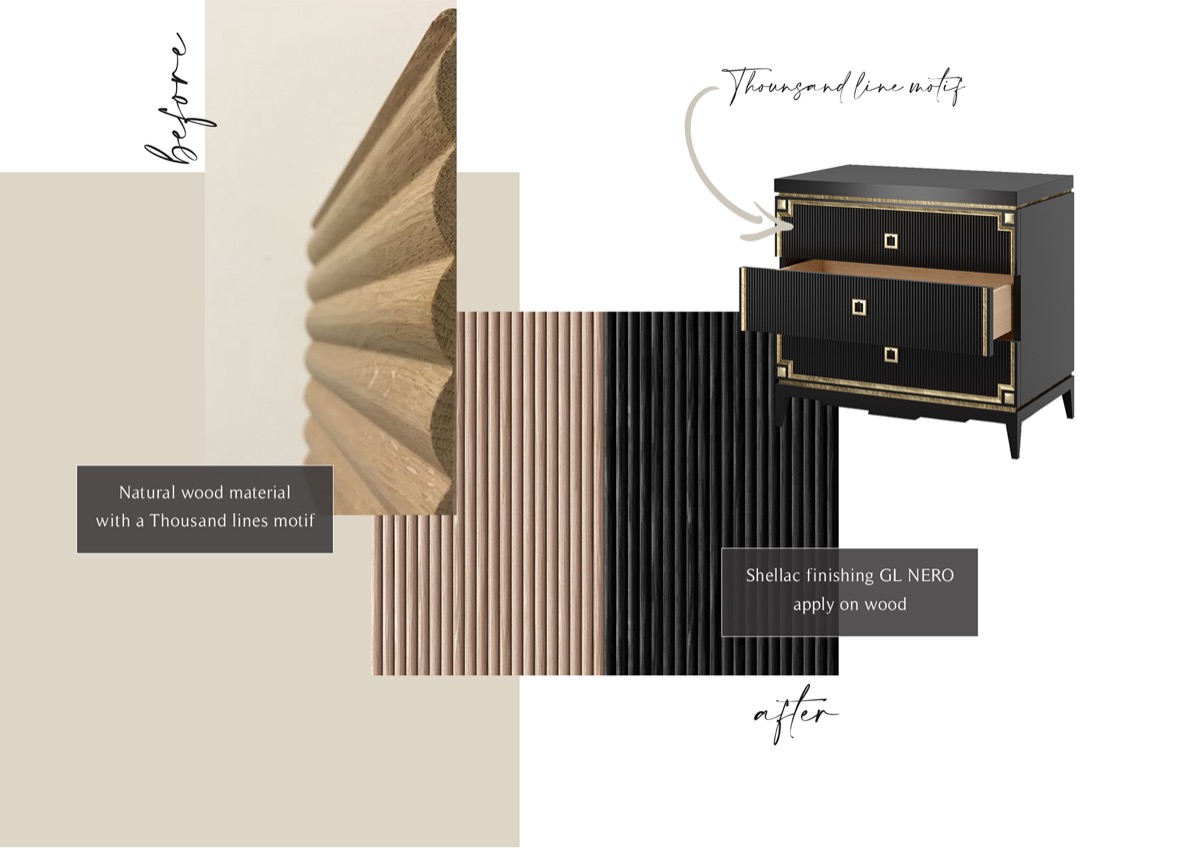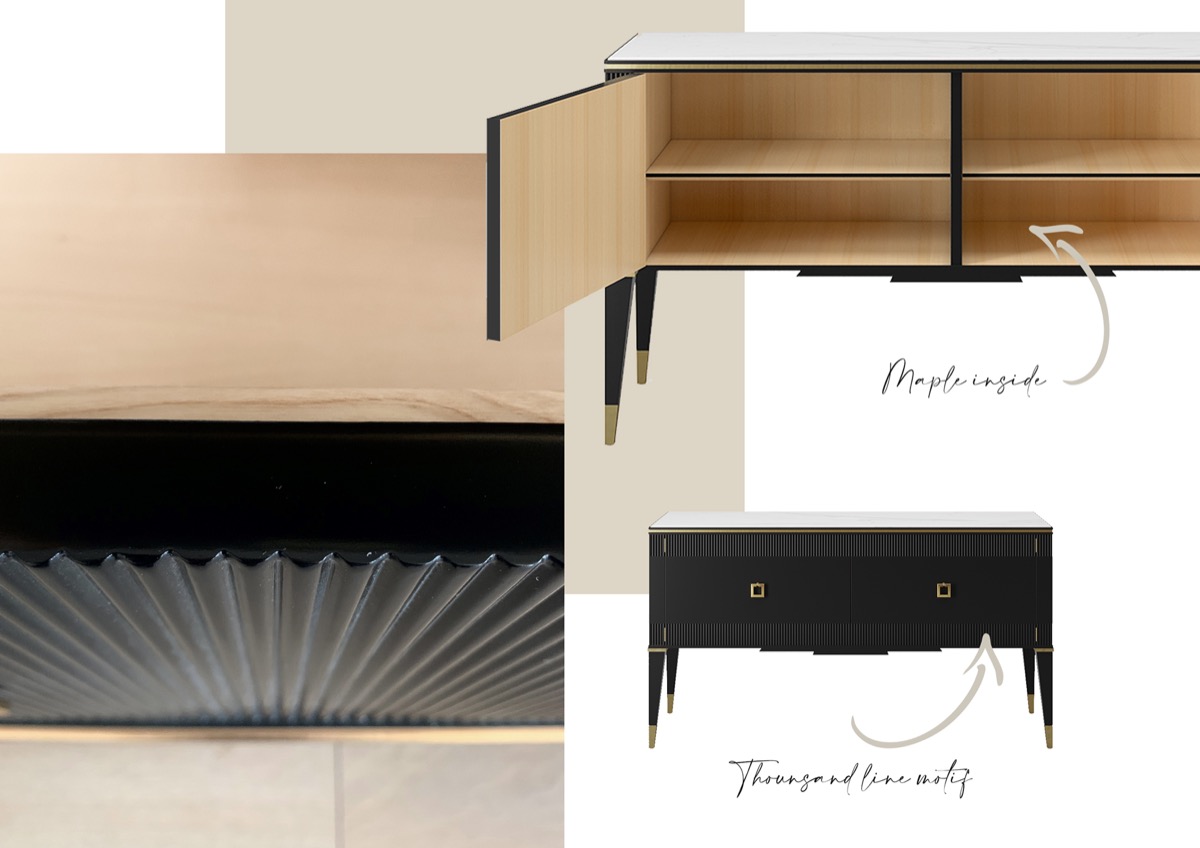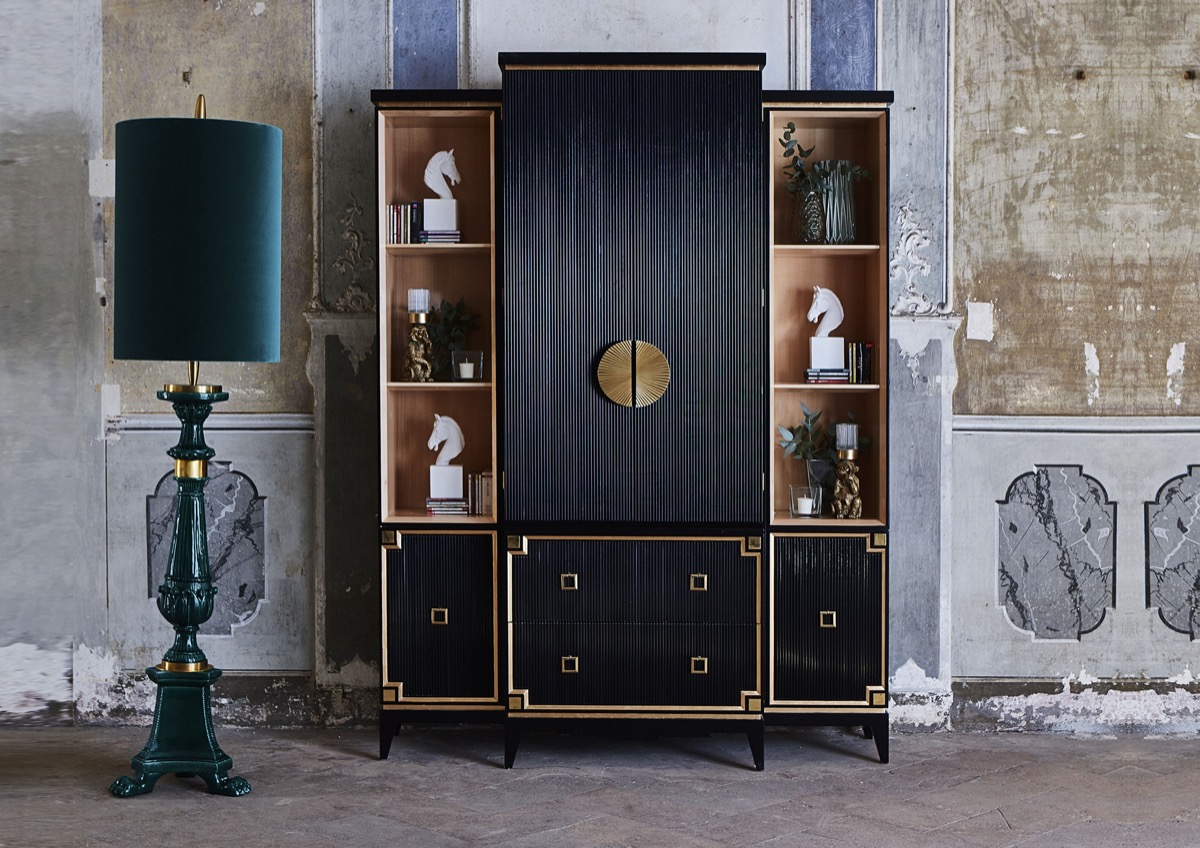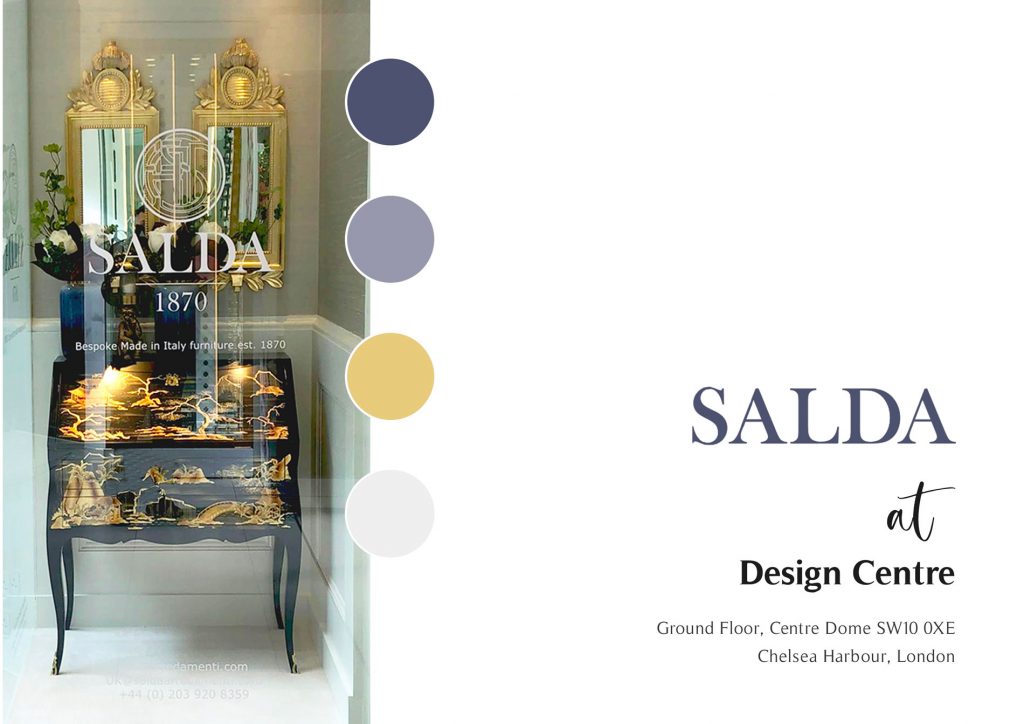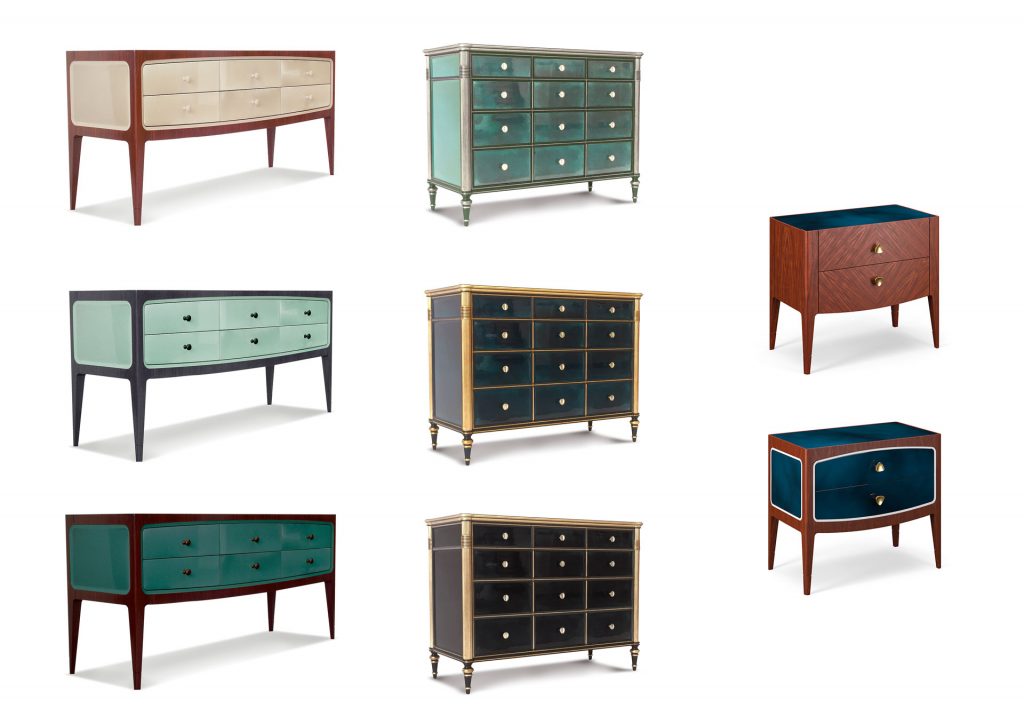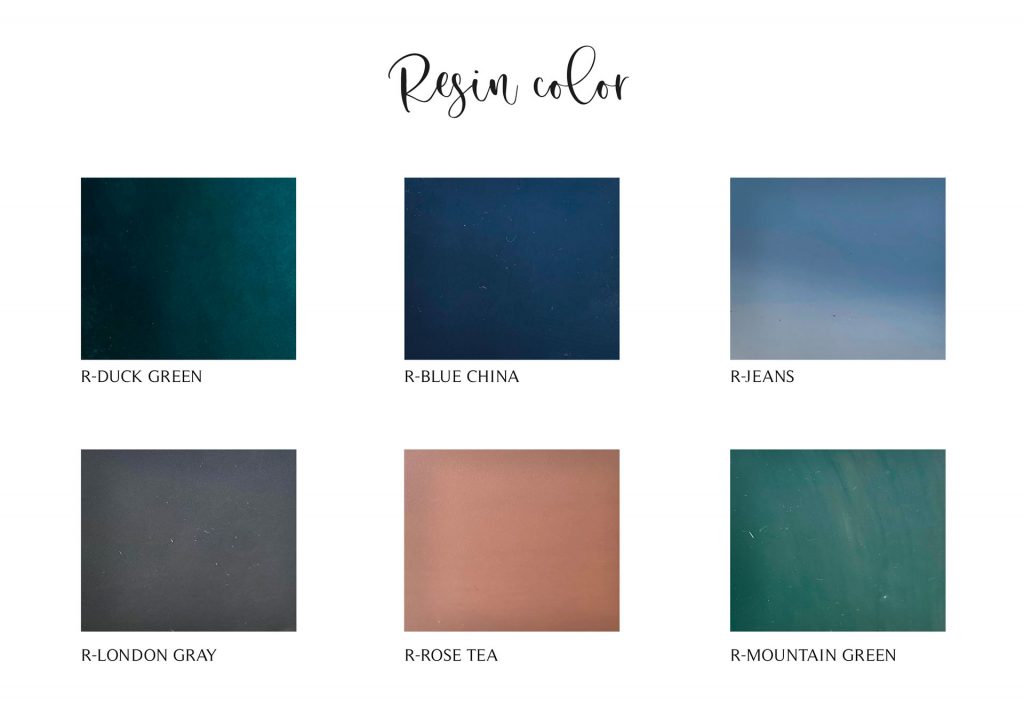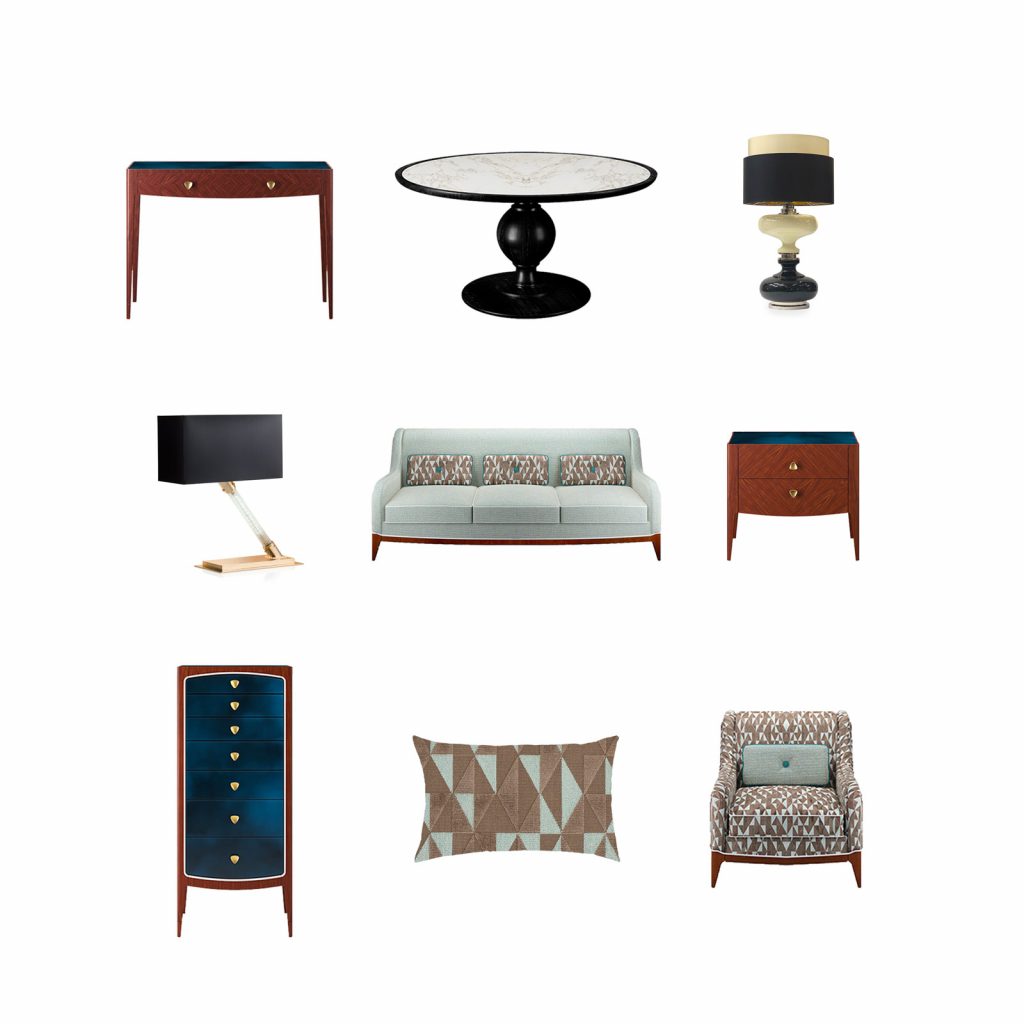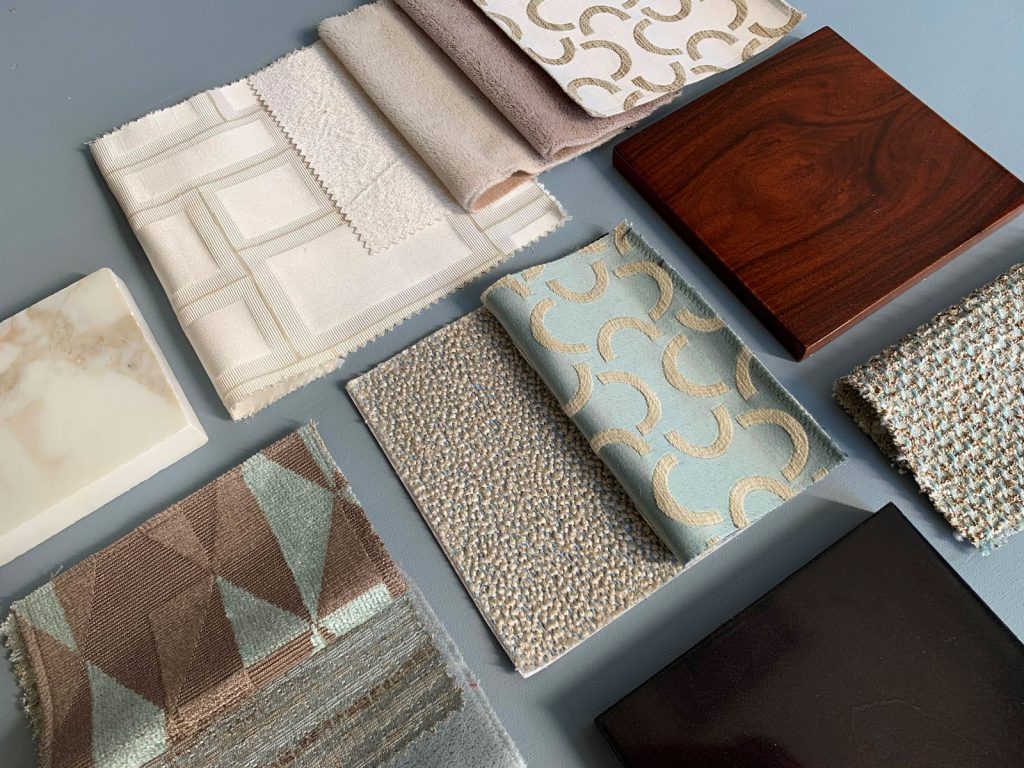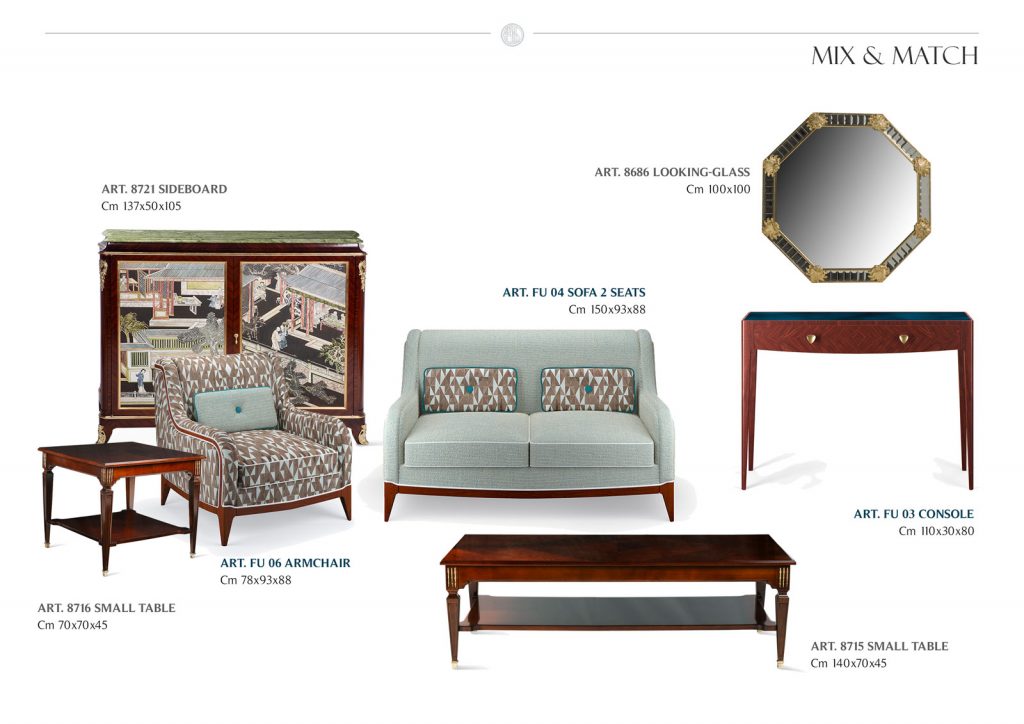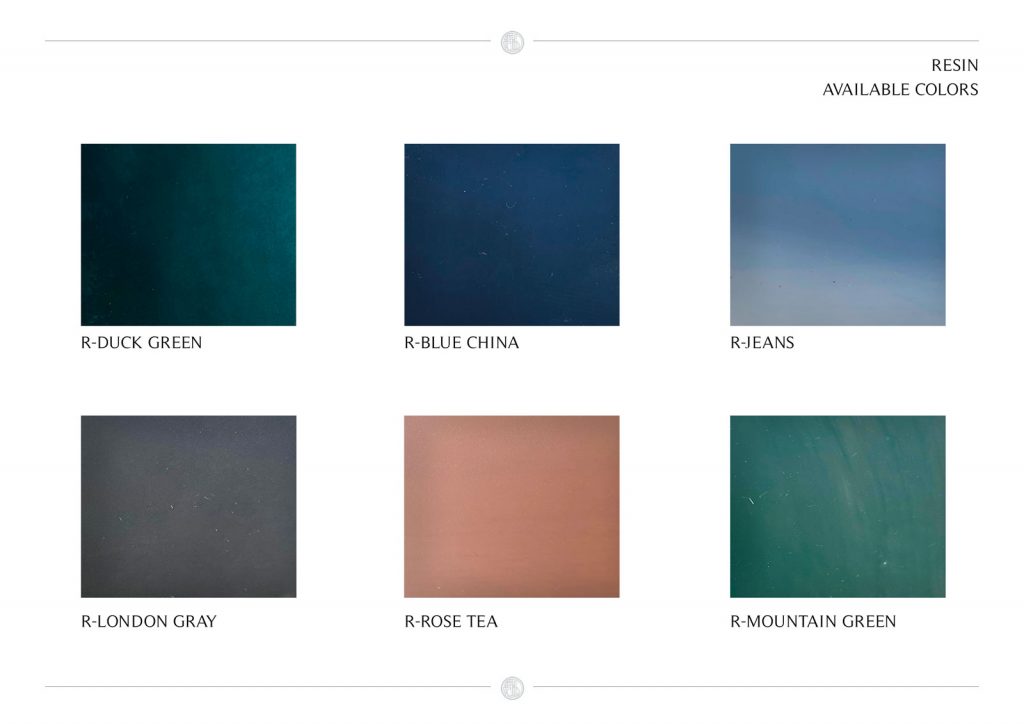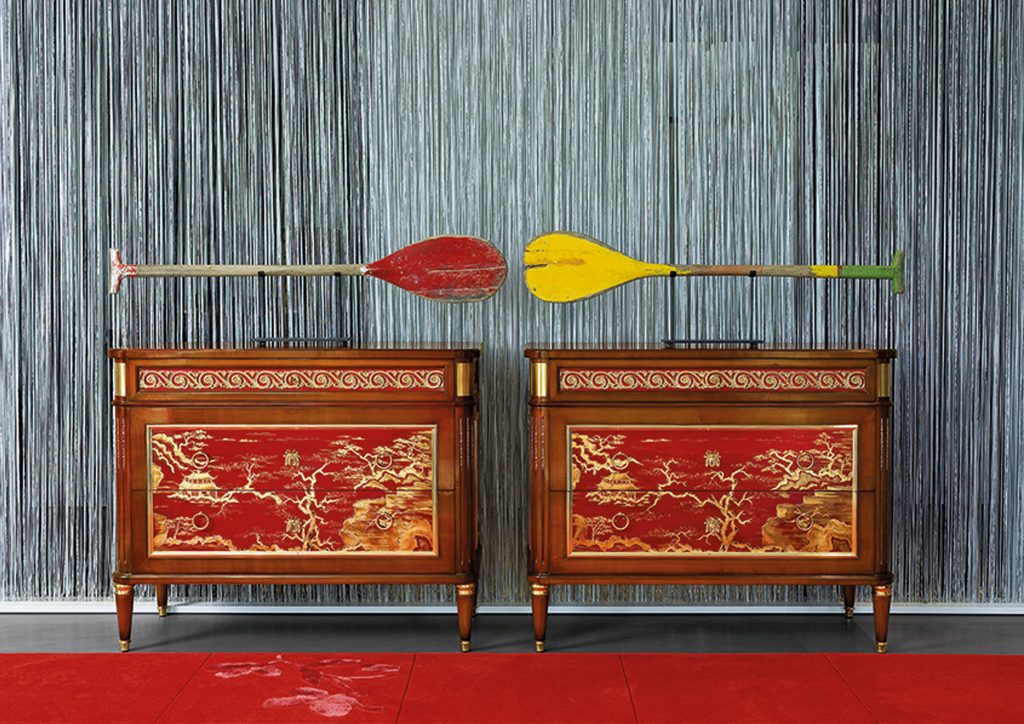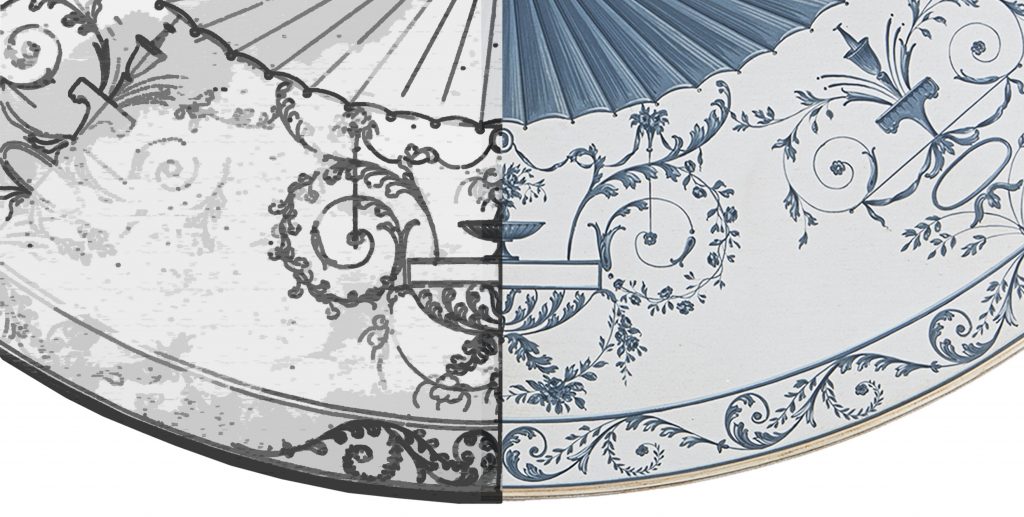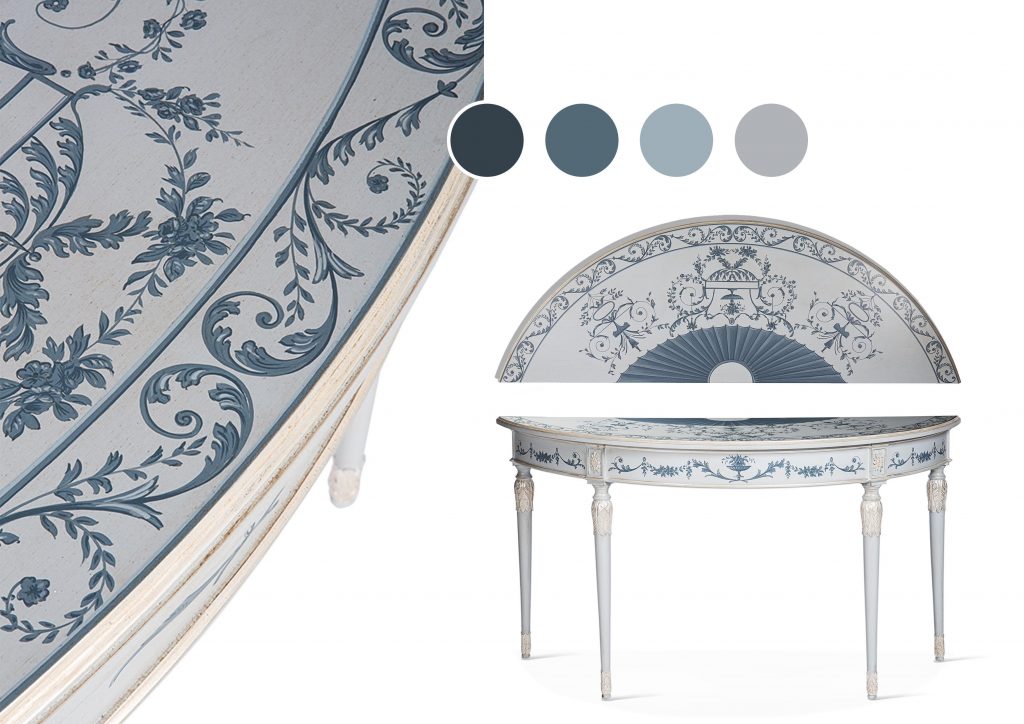A finish obtained by laying very thin gold or silver leaves next to each other.
These leaves are applied to the surface with a glue, called mission, and then patinated or worked in different ways depending on the type of finish chosen.
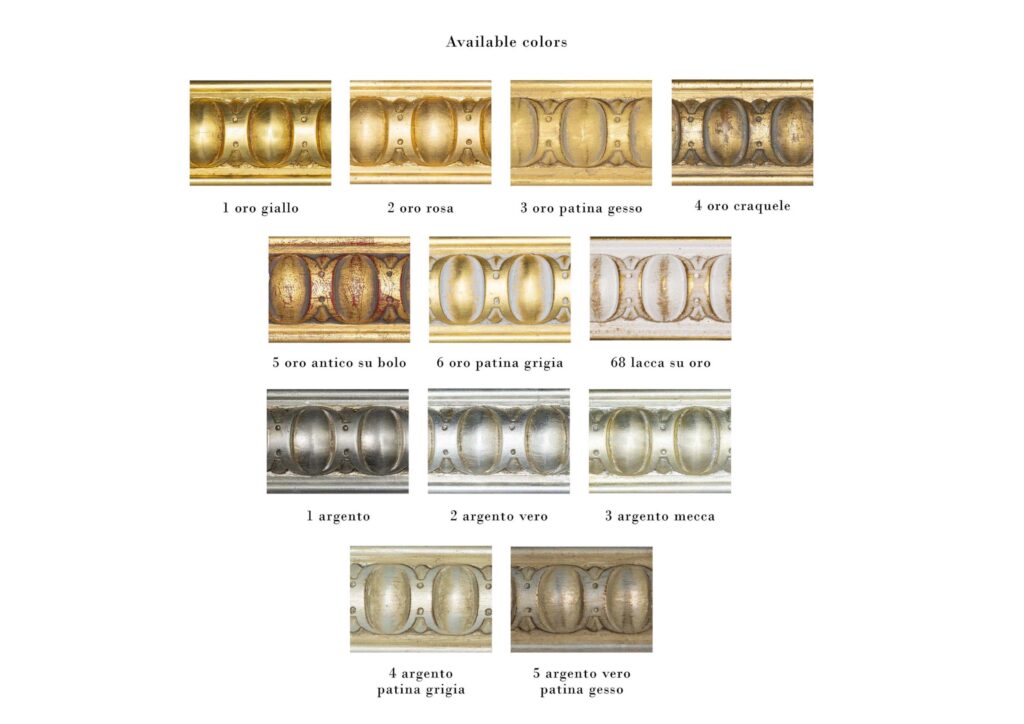
The mission is spread with a brush on the surface to be ‘gilded’,
left to dry and then covered, one after the other, with metal strips.
When finished, excesses are delicately removed.
Even in the case of requests for gold profiles or details, the company chooses to use only gold leaf and not lacquer.
The workmanship, therefore, is the same even on very small portions or on top of lacquer or glossy colours.
The different types of rendering of the finish as we appreciate it in its final effect are obtained by subsequent processing and “soiling” with patinas of different colours and types.
The colour range does not include fine 24K gold, but SALDA can also carry out this forgotten process on request.
The final effect of Gold and silver leaf application
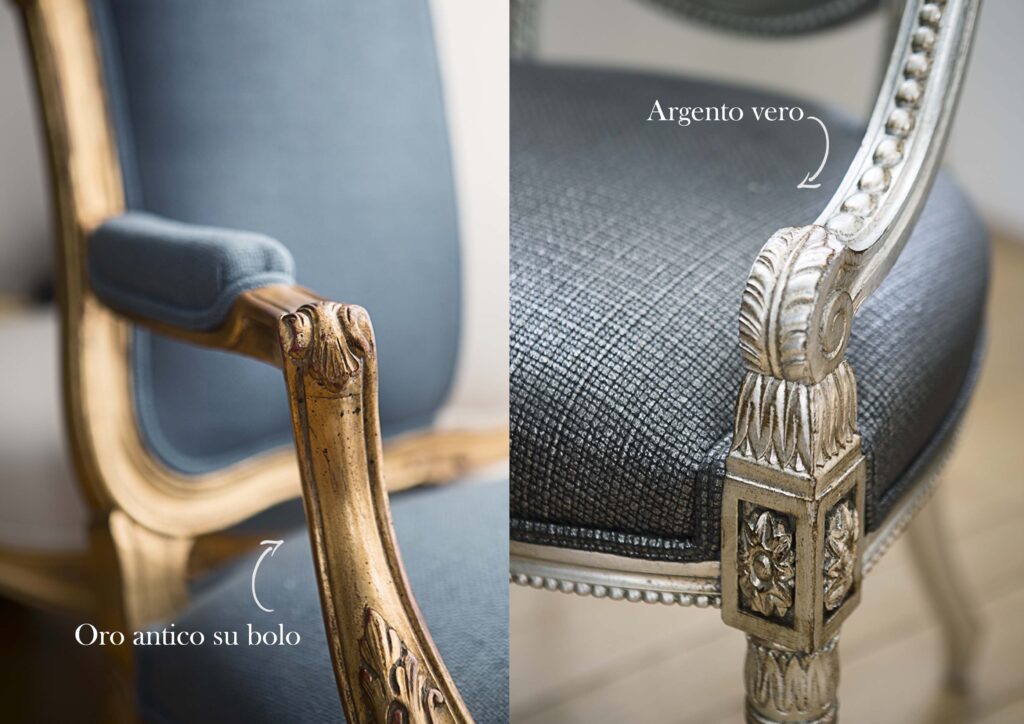
The final effect of gold leaf of profiles
